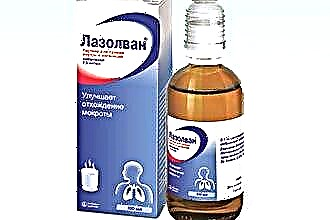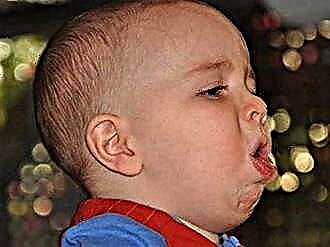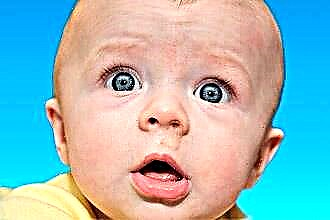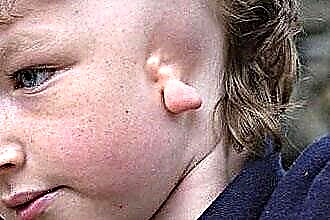For hundreds of years, inhalation has been considered an effective method of fighting inflammation in the upper respiratory tract. For the procedures, decoctions, infusions of various herbs, fruits, vegetables were used. With the progress of medical technologies, nebulizers have come into our lives, thanks to which inhalations have become more convenient, safe, and also have a powerful therapeutic effect. Inhalation is especially useful for laryngitis in children.
 A modern steam device is widely used in pulmonology, pediatrics, otolaryngology for the treatment and prevention of infectious and inflammatory pathologies of the respiratory system. Among the diseases in the treatment of which steam procedures are used, it is worth highlighting sinusitis, rhinitis, pharyngitis, tonsillitis, laryngitis, inflammation of the bronchial mucosa, lung tissue.
A modern steam device is widely used in pulmonology, pediatrics, otolaryngology for the treatment and prevention of infectious and inflammatory pathologies of the respiratory system. Among the diseases in the treatment of which steam procedures are used, it is worth highlighting sinusitis, rhinitis, pharyngitis, tonsillitis, laryngitis, inflammation of the bronchial mucosa, lung tissue.
As part of complex therapy, the healing properties of steam with medicinal substances are used for chronic hyper- / atrophic, catarrhal forms of laryngitis. After the end of the acute stage of inhalation, it is allowed to prescribe for inflammation of bacterial origin.
The use of nebulizer inhalations at home allows at the initial stage to suspend the development of the inflammatory process, reduce tissue swelling, soreness when coughing, and sore throat. In the absence of the possibility of conducting steam procedures at home, they can be carried out in a polyclinic, in stationary conditions, since many medical institutions are equipped with devices.
What is the therapeutic effect of inhalation? When a child suffers from laryngitis, the therapeutic effect is:
- a decrease in the viscosity of mucus in the larynx;
- liquefaction of sputum, activation of its excretion;
- reducing the swelling of the laryngeal mucosa;
- prevention of broncho-, laryngospasm;
- reducing the severity of the inflammatory process;
- antiseptic action;
- improving local blood flow, delivery of biologically active substances;
 acceleration of regenerative processes, healing of microdamage to mucous membranes;
acceleration of regenerative processes, healing of microdamage to mucous membranes;- analgesic action;
- reducing the hoarseness of the voice with the spread of inflammation to the vocal cords or in the case of their trauma during overexertion;
- preventing the spread of inflammation to the lower parts of the respiratory tract;
- reduction of mucosal irritation.
Thus, inhalations can be used for various purposes, helping to cure the disease at the initial stage. In some cases, timely therapy makes it possible to avoid oral administration of antibacterial drugs.
If the symptoms of laryngitis do not decrease after 2 days from the start of inhalation, you should consult a doctor for examination, correction of therapy.
Why do pediatricians recommend a nebulizer?
The main advantage of the nebulizer is the ability to transform the drug into tiny particles for deep penetration into the respiratory organs. The child does not need to inhale deeply the vapor; medications reach the inflammatory focus without additional help from the patient.
When the drug is crushed into particles with a diameter of more than 5 microns, the drug reaches the mucous membrane of the pharynx, larynx, trachea. If you set the mode of drug splitting into elements of 2-4 microns in size on the device, you can penetrate into the bronchi, bronchioles. With regard to particles of 2 microns, with their help it is possible to achieve a therapeutic effect at the level of the alveoli.
On a nebulizer, a person independently controls the depth of drug penetration by adjusting the particle diameter. Note that earlier, when using handy home remedies for the procedure, the level of drug penetration depends on the depth of breathing.
Compressors come in two varieties:
- compressor (most common for use at home, in hospitals). They allow the use of drugs that, when heated, lose their medicinal properties. Compressor devices make it possible to carry out inhalation treatment with antibacterial,
 mucolytic, anti-inflammatory, hormonal, expectorant, bronchodilator, immunostimulants, phytopreparations. Grinding of the medication is carried out by supplying air in a special chamber under pressure. As a result, the operation of the device is quite noisy.
mucolytic, anti-inflammatory, hormonal, expectorant, bronchodilator, immunostimulants, phytopreparations. Grinding of the medication is carried out by supplying air in a special chamber under pressure. As a result, the operation of the device is quite noisy. - Ultrasonic view is compact in size, which is convenient for transportation. The operation of the device is based on the vibration of a piezoelectric element. The limitation of its use lies in the impossibility of using certain drugs, which are destroyed when heated. Heat is released during the disintegration of the drug into particles. In most cases, an ultrasonic device is recommended for moisturizing the mucous membrane.
- The mesh nebulizer is practically not used due to its high cost. The operation of the device consists in crushing the drug during its passage through the membrane, which contains the smallest pores. The advantages include small size, ease of use, lack of noise, the ability to use many medicines.
The structure of the compressor device is represented by a compressor, a container for a medicine, a mask, and tubes. Children may be afraid of inhalation, therefore, parents are advised to purchase a nebulizer in the form of a toy, and to carry out the procedure in the form of a game.
Before starting inhalation, it is necessary to prepare the drug. For dilution, only saline is used, 1 ml of which is used directly by the device in operation. For one session lasting up to 10 minutes of inhalation, 4 ml of the diluted medication is usually sufficient. The container for the drug should be in an upright position.
Young children should place the mask tightly against their face. At an older age, a child can clasp the mouthpiece with his lips. After the end of the procedure, the components of the device should be washed with boiled water (if it concerns a home nebulizer). When the procedure is carried out in a medical institution by many patients, then the parts of the device are wiped with an antiseptic solution, and then washed with boiled water.
The use of oil solutions and herbal decoctions in a nebulizer is impractical due to the difficulties of subsequent cleaning.
If you follow the proper care of your device, a nebulizer can become a source of infection.
Benefits of nebulizer inhalation
The development of nebulizers was carried out taking into account many factors for maximum comfort for a person. The advantages of the device include:
- constant supply of steam with the drug;
- the possibility of carrying out the procedure in a supine position;
- no need for deep breathing, synchronization with the operation of the device;
- it is possible to allow the procedure to be carried out in infants;
- control of the steam temperature, which is the prevention of burns of the mucous membrane of the upper respiratory tract;
- the possibility of accurate dosing of the drug;
- adjustment of the diameter of the drug particles, taking into account the localization of the inflammatory focus.
Features of inhalation
 The effectiveness of nebulizer therapy has been confirmed for many years. It is especially convenient to use the device on a child, a pregnant woman, or in old age, providing the maximum therapeutic effect.
The effectiveness of nebulizer therapy has been confirmed for many years. It is especially convenient to use the device on a child, a pregnant woman, or in old age, providing the maximum therapeutic effect.
- before starting the procedure when using herbal medicines, you must make sure that there is no allergic reaction to it.This will help to avoid the development of severe bronchospasm, the progression of respiratory failure;
- inhalations are carried out 30 minutes after physical activity, which is necessary to restore breathing, heart rate;
- the procedure is performed 90 minutes after eating, so as not to provoke the gag reflex;
- after the procedure, it is forbidden to go outside (in winter), drink liquid, eat;
- the use of oily solutions with a nebulizer is prohibited due to obturation of the lumen of small bronchi with fatty particles, which leads to increased shortness of breath, respiratory failure, deterioration of the process of excretion of sputum and impaired drainage bronchial function.
- carrying out inhalations in the presence of a purulent process, for example, with lacunar, follicular tonsillitis, leads to increased reproduction of the infection, its spread to healthy tissues.
Inhalation is prohibited at temperatures above 37.5 degrees.
Nebulizer therapy drugs
To achieve the maximum therapeutic effect, it is necessary to use drugs depending on the clinical symptoms.
- bronchodilators are indicated in the presence of bronchospasm, when shortness of breath and cough are troubling. Berodual can be used in an acute period or in a short course for prophylactic purposes. For the treatment of a child from twelve years of age, the dosage is 40 drops. For children from six years old, 20 drops are enough, and up to six - 10 drops. This volume is diluted with 3 ml of saline. The frequency of the procedure is regulated by the degree of bronchospasm, the severity of the child's condition, and the clinical picture.
 mucolytics are indicated to facilitate the elimination of phlegm by reducing its viscosity. Of this group of drugs, Lazolvan is widely prescribed. Starting from the age of six, 50 drops are allowed, from two years old - 40 drops, and for a child under 2 years old, 20 drops are enough for one session. The dose is diluted with saline solution 3 ml. The procedure is performed twice a day.
mucolytics are indicated to facilitate the elimination of phlegm by reducing its viscosity. Of this group of drugs, Lazolvan is widely prescribed. Starting from the age of six, 50 drops are allowed, from two years old - 40 drops, and for a child under 2 years old, 20 drops are enough for one session. The dose is diluted with saline solution 3 ml. The procedure is performed twice a day.
Drugs that stimulate sputum discharge, for example, Lazolvan, Ambrobene, cannot be used in parallel with drugs that suppress the cough reflex (Bronholitin, Sinekod, Pectussin, Codeine).
- anti-inflammatory drugs are prescribed to reduce pain, tissue swelling, and the severity of the inflammatory reaction. From herbal remedies, we will single out Rotokan, which is diluted 40 times with saline. The procedure is repeated three times a day. You can also dilute 0.7 ml of eucalyptus tincture in 180 ml of saline. To carry out inhalations three times a day, 3 ml of the prepared solution. The medicine is prohibited for bronchospasm (obstructive bronchitis, asthma). Calendula is diluted 40 times; 3 ml of the prepared solution is enough for a session.
- antimicrobial agents are used to combat infectious pathogens after the end of the acute phase of inflammation. For this, Furacilin is used in finished form, or after having prepared it by thoroughly dissolving the tablet in 100 ml of saline solution. For inhalation, 3 ml is enough. For children, it is recommended to use a ready-made solution, which can be purchased at the pharmacy.
If necessary, hormonal agents (Pulmicort), immunomodulators (Interferon), antitussives (Tussamag) can be administered by inhalation.
When asked whether it is possible to do inhalations for laryngitis in children, pediatricians give a positive answer. We have analyzed the advantages of nebulizer therapy, but it should be borne in mind that the listed medicines are allowed to be used at home only after consulting a doctor. This is necessary to assess the severity of the course of the disease, the correct choice of drugs, their dosage, avoiding the development of complications.

 acceleration of regenerative processes, healing of microdamage to mucous membranes;
acceleration of regenerative processes, healing of microdamage to mucous membranes; mucolytic, anti-inflammatory, hormonal, expectorant, bronchodilator, immunostimulants, phytopreparations. Grinding of the medication is carried out by supplying air in a special chamber under pressure. As a result, the operation of the device is quite noisy.
mucolytic, anti-inflammatory, hormonal, expectorant, bronchodilator, immunostimulants, phytopreparations. Grinding of the medication is carried out by supplying air in a special chamber under pressure. As a result, the operation of the device is quite noisy. mucolytics are indicated to facilitate the elimination of phlegm by reducing its viscosity. Of this group of drugs, Lazolvan is widely prescribed. Starting from the age of six, 50 drops are allowed, from two years old - 40 drops, and for a child under 2 years old, 20 drops are enough for one session. The dose is diluted with saline solution 3 ml. The procedure is performed twice a day.
mucolytics are indicated to facilitate the elimination of phlegm by reducing its viscosity. Of this group of drugs, Lazolvan is widely prescribed. Starting from the age of six, 50 drops are allowed, from two years old - 40 drops, and for a child under 2 years old, 20 drops are enough for one session. The dose is diluted with saline solution 3 ml. The procedure is performed twice a day.

